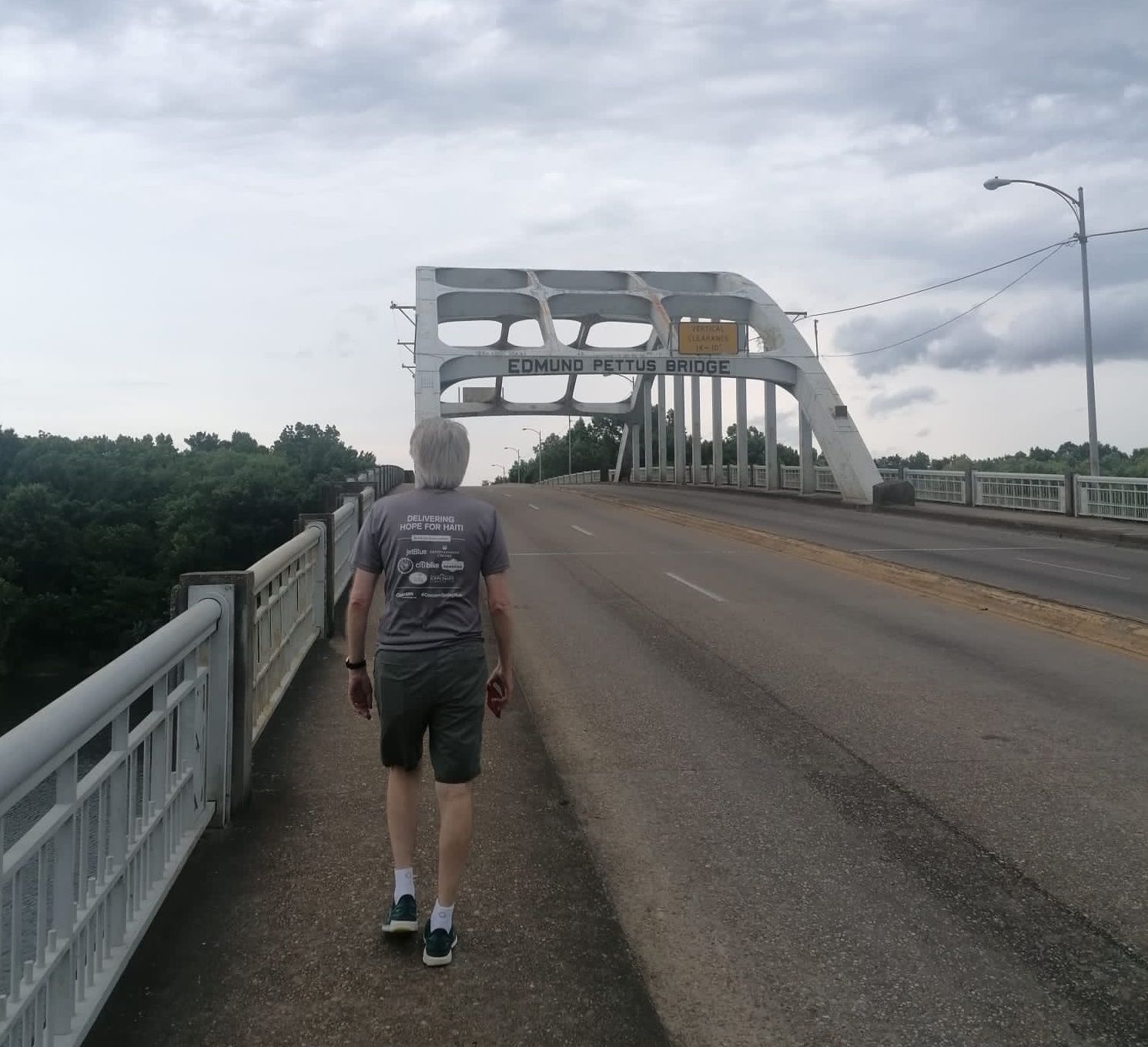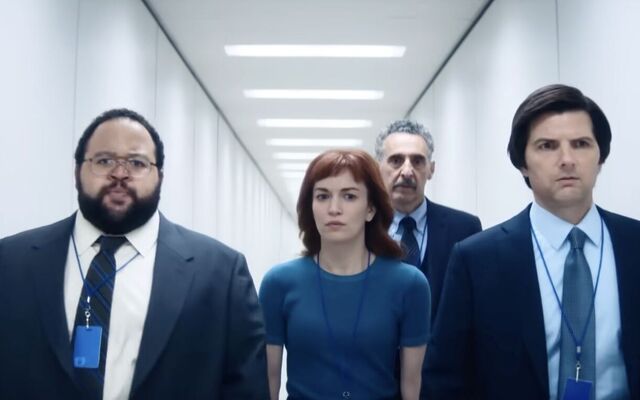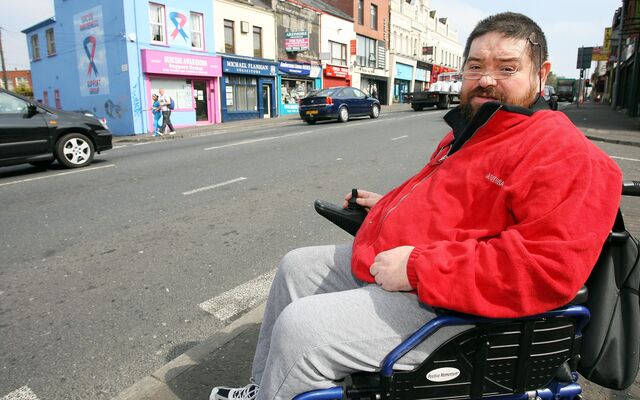A handful of searing images capture the clear moral certainty of the Black civil rights struggle: the Woolworth's lunch counter protesters being pummelled by white bullyboys in Greensboro, North Carolina; the Memphis, Tennessee balcony of a blacks-only motel on which Martin Luther King lies dying as his colleagues point in the direction of the shooter; German shepherds being sicced by police on protesting children in Birmingham, Alabama all spring to mind.
But for me, one image without any people at all carries more power than all the pivotal images referenced above - the Edmund Pettus Bridge in Selma, Alabama, scene of the savage attack on peaceful protesters by state troopers - some on horseback – on March 7, 1965.
BARREN: Almost all the stores pictured are vacant on Broad Street, Selma, Alabama
I feel vindicated in that sentiment by the fact that the recently-published and government-sponsored Official United States Civil Rights Trail — marking the Deep South struggle for equality and respect across 130 pages of text and pictures — chooses a photograph of that portentous bridge (named for a Confederate general and Ku Klux Klan member) for its cover.
JOHN LEWIS BEATEN CROSSING THE EDMUND PETTUS BRIDGE
— Kai Buxxlo (@CBuxxlo) July 10, 2022
How the images of John Lewis being beaten during ‘Bloody Sun’ went viral
March 7, 1965, Alabama troopers beat & gassed John Lewis & hundreds of marchers on the Edmund Pettus Bridge in Selma, Alabama.https://t.co/ryfcPOjYz7 pic.twitter.com/Hf5wsy8WgP
That fateful march over the bridge — led by the late Congressman John Lewis whose image adorns murals on the Falls and in his native Atlanta — was in response to the police killing of a black man in a nearby town during a protest for the right to vote. (It is always a head-shaking moment to consider that as recently as the 1960s African-Americans were denied the right to vote in their own country.) And, undoubtedly, it was the courage and tenacity of Lewis, knocked unconscious by a policeman's baton on the Selma bridge, and his colleagues, which eventually won black Americans equality.
CRUEL CUT: An abandoned barber's shop on Selma's main street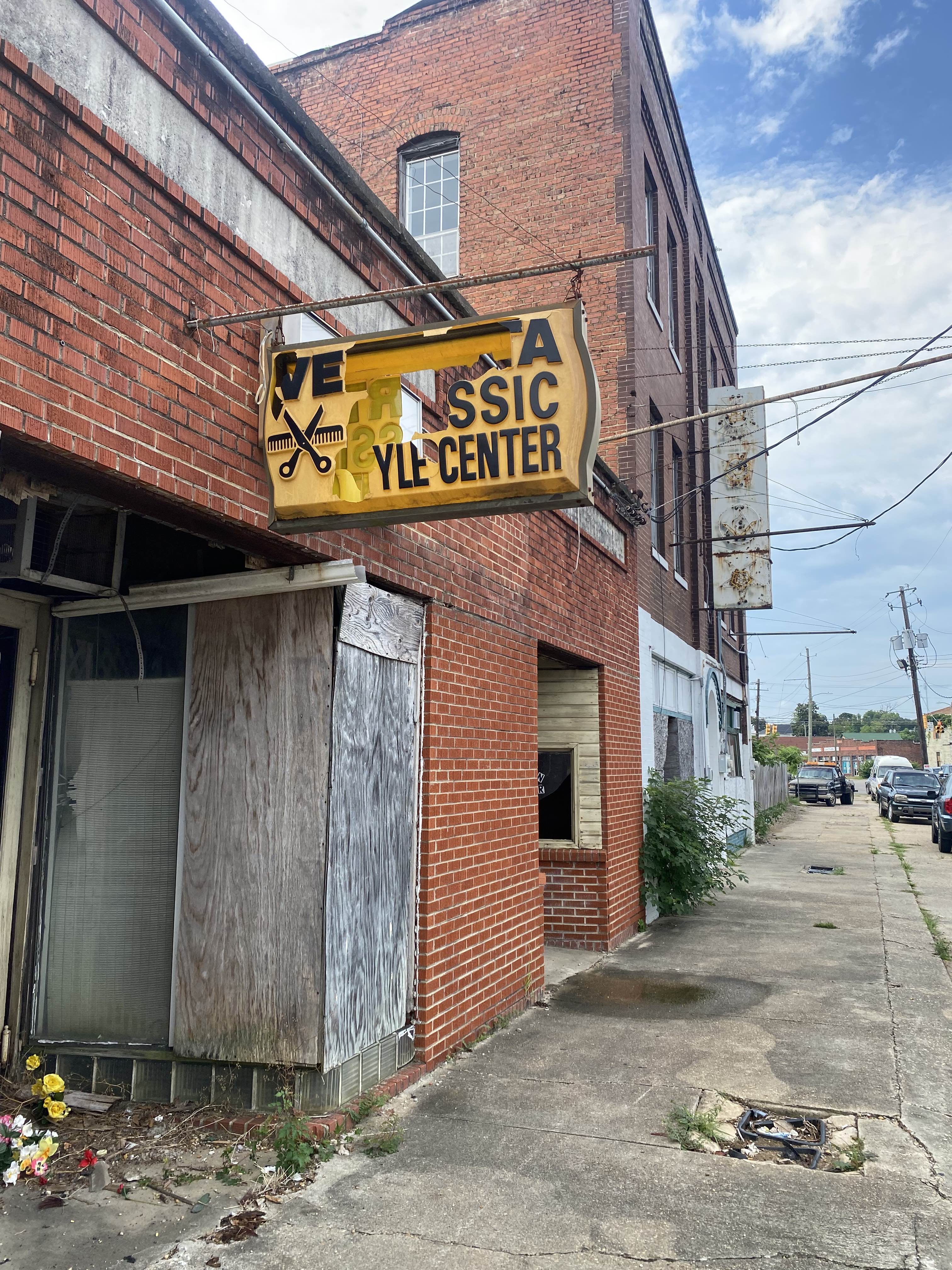
Or, at least, equality after a fashion. For while the civil rights movement surely won their war, winning the peace has been a different matter altogether.
Nowhere is that clearer than in Selma itself: For a town which relatively recently lent its name to an award-winning movie and epitomises the black civil rights struggle which inspired freedom-loving people around the world, there is a dire lack of, well... almost everything a small town needs. No hop-on, hop-off buses or Belfast-style guided tours for visitors here, no downtown lofts or busy apartment blocks, no bustling bars or restaurant rows, no cultural quarter or college vibe, no taxis, no Uber, no art gallery, theatre or cinema. The list goes on.
Some of this can be blamed on Covid, although the two official guides sitting behind the counter in the Selma civil rights visitor centre, with the sole job of telling tourists that the exhibition is still closed due to pandemic protocols, could, perhaps, be more productively deployed.
OUT OF GAS: A former 'gas' station on Broad Street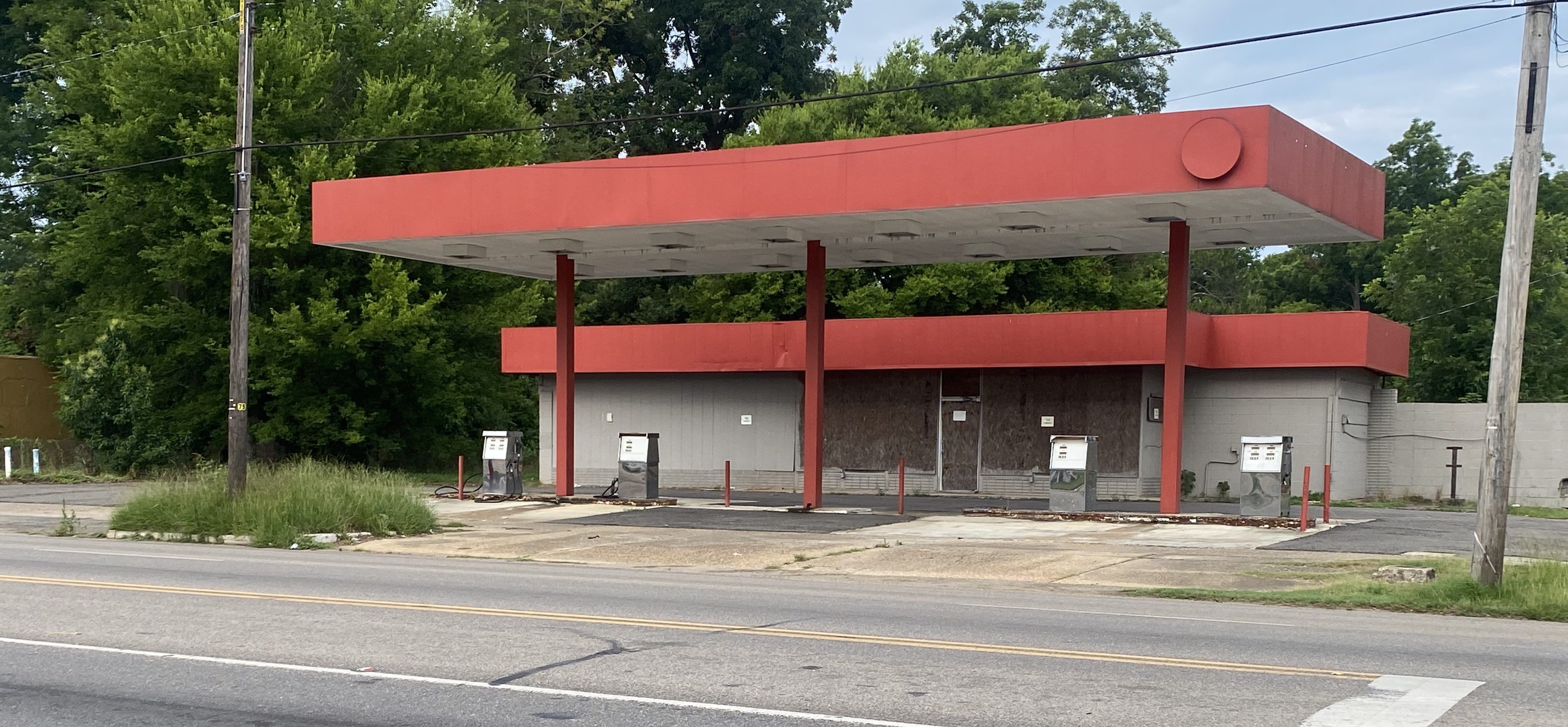
But most of it is due to the fact that there is no downtown Selma. There is no 'there' there, someone cruelly remarked about Oakland, California, but for the people of Selma – ultimately, who cares about the tourists? — there's a harsh truth in that aphorism. Take Broad Street (the town's equivalent of our Andersonstown or Falls Road), the one-and-a-half mile Main Street leading from the Edmund Pettus Bridge to Highfield Avenue.
Bisected by a railway line carrying freight (there is no passenger train to Selma), the thoroughfare is blighted by dereliction and neglect of a scale reminiscent of post-war Germany. Boarded up mansions, blocked-up apartment blocks, abandoned petrol stations, empty stores, long-closed diners, a smashed sign above what had been a barber's, a shuttered office. It is a dismal and depressing vista. Admittedly, American city centres have been cratered by white flight over many decades, but that doesn't explain the dizzying drop in the fortunes of 'The Queen City'.
GHOST TOWN: A boarded up Good Samaritan Center apartment block
For none of this happened by accident. Selma is what the Americans call a minority-majority town. 80 per cent of the 21,000-strong populace is black, one in every three citizens lives in poverty. The town is the county seat of Dallas County, one of the three poorest counties in the 'Heart of Dixie'. In a state which until recently flew the Confederate flag over its capital, Selma, for all its civil rights acclaim, never had a chance. For this once thriving trading town on the banks of the Alabama River, it has all been downhill since the glory days of civil rights victories — perhaps even since the days of Civil War victories.
Of course, it's never been easy for working class folks in Sweet Home Alabama, despite what Leonard Skynyrd memorably sang. Stats from 2020 place it as fifth poorest state in the nation. 714,000 Alabamians (15 per cent) live below the federal poverty threshold, defined as less than $13,170 (£11,000) for one adult. It's a hard life, but even harder if you're black: 11 per cent of whites live in poverty, 30 per cent of blacks.
'THE QUEEN CITY': The water town in Selma above an empty building on Broad Street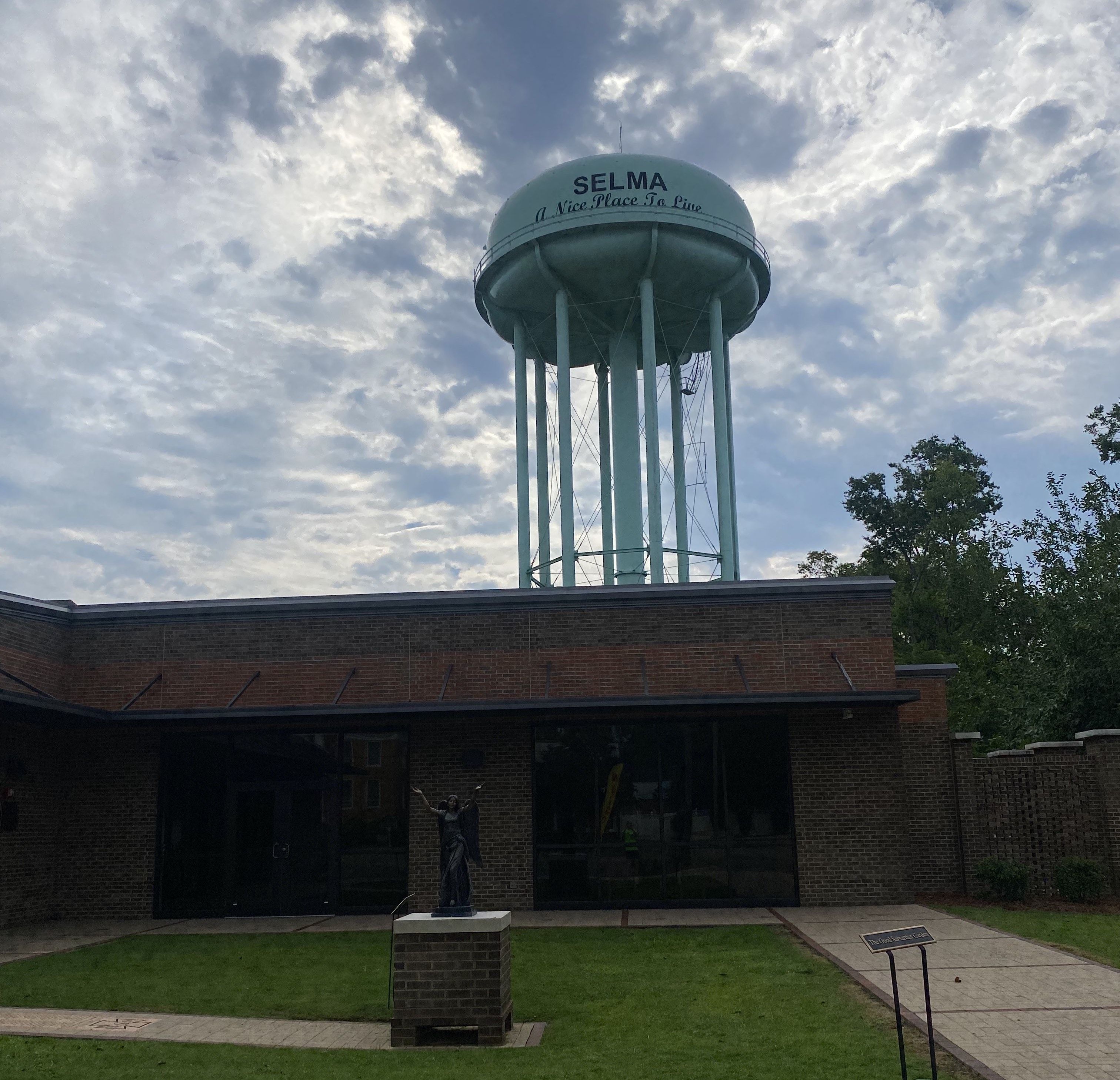
How did we get here? It's hard for this innocent abroad to avoid the impression that the state of Alabama is punishing its black population for having won its 'freedom'. Is this payback time for shaming the white powers-that-be with their racist credo of, to quote Governor George Wallace in his inauguration speech in 1963, "Segregation today, segregation tomorrow, segregation forever"? This we do know: at state level, Alabama is in the vice-like grip of Republican Party legislators, more than a few of whom are from the Make America White Again school of politics. Directing public funds to Selma is very low on their list of priorities — and it shows.
I recount this tale of woe not to denigrate the good people of Selma, Alabama, black or white, who last month made us royally welcome in the 'Cradle of the Confederacy', allowing me to fulfil a personal ambition to follow in John Lewis's footsteps by walking (and, in the early morning, running) the Edmund Pettus Bridge. Indeed, we enjoyed the warm hospitality of the St James Hotel on the river's edge and feasted like kings in the incongruously named Tally Ho restaurant.
GLEAMING: Firefighter Dalton at the Selma fire house
We had cheering encounters too with some of the folks who are trying to give the down-on-its-luck centre of Selma some of the TLC it needs. Chief among those is Massachusetts implant John Tipmore whose Broad Street Books is a haven for bibliophiles, and the busy Downtowner diner where we politely (and wisely) declined the grits with our over-easy eggs. A special shout-out too for Dalton at the sparkling fire house who told me his crew had been called out eight times in nine days – primarily to fires in derelict homes.
No, my reason for telling this bleak tale at all is to remind ourselves of the importance of winning the peace. And you do that through strong leadership and wise investment. "Agiate, agitate, agitate," roared the escaped slave and revered abolitionist Frederick Douglass, who lectured in Belfast in 1845. Yes, for sure, but also invest, invest, invest, lest the gains of our own civil rights struggle are squandered.
That's why I had a holiday in my heart when I saw the newest investment on the Falls – the reborn St Comgall's school, complete with bullet holes in the brickwork dating back to the '69 pogroms — in all its splendour at this year's Best of the West Awards. A fine buddy to the neighbouring Raidió Fáilte building below Divis Tower. And then there are more investments in the works, at the Roddy's and at the PD to mention two watering holes close to my heart, even as the jewel in the crown, Casement Park, beckons.
ARC: Rev Martin Luther King on the 1963 march on Washington for civil rights. (Credit Unsplash.com/National Archives)
I have no idea how Selma can get back on its feet, and who am I anyhow other than a fly-by-night visitor to be giving advice to a proud people who with their great wells of courage bent the arc of the moral universe towards justice?
But it's my hope that, just as John Lewis picked himself up on Selma's Bloody Sunday so that he could address frightened and injured protesters seeking shelter in a nearby church after the carnage (and ultimately led his people successfully across the Edmund Pettus Bridge), that one day Selma too will rise again.

